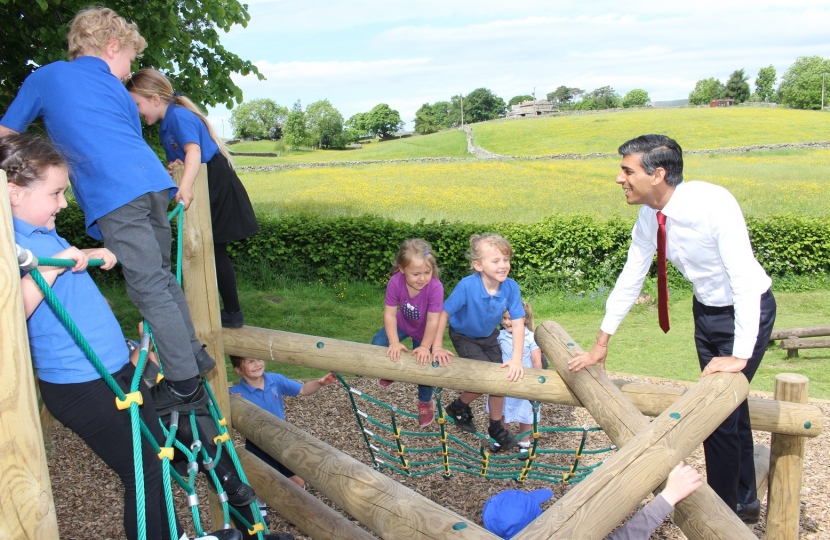
Almost six years have passed since I stood on the steps of 10 Downing Street as a newly-elected MP with a small group of schoolchildren from Wensleydale.
The children, from Bainbridge Church of England Primary School, and their headteacher were handing to the Prime Minister a petition calling for a better way of funding schools in North Yorkshire.
I had organised the petition after I, along with many other MPs representing rural areas, felt the way funds were then allocated to schools across the country was unfair.
Visits to schools like Bainbridge have always been an important part of my work as your MP and I knew they were receiving hundreds of pounds less per pupil than schools in urban or suburban areas of Britain because of an out-of-date national funding formula.
Thanks to the efforts of the pupils from Bainbridge, the many people who signed the petition and my rural MP colleagues, the national funding formula was changed so that greater weight was given to the extra costs of running schools in remote rural areas.
The new formula has been used in the current three-year deal for schools which is seeing spending rise by £14.4bn – the largest cash increase to school funding in a decade.
The largest slice of that extra money is coming in the third year – 2022-3 – and the notional allocations for individual schools were announced last week.
In the allocations we are seeing the benefits of the new formula coming through. Primary schools in our area will receive, on average, an increase of 7.7 per cent in what is described as pupil-led per pupil funding – a calculation based on the number of pupils in a school and their characteristics.
Really importantly for rural North Yorkshire, the new formula provides additional resources for small and remote schools through something called the “sparsity” factor.
This is money specifically allocated to schools recognising that because of where they are located they do not have the same opportunities to grow or make efficiency savings as other schools.
In the 2022-3 year the additional funding such schools will attract is rising to up to £55,000 for primary schools and £80,000 for secondary schools – in both instances a £10,000 increase from 2020-21.
The sparsity factor has also been altered by using road distances rather than straight-line distances when measuring a school’s remoteness. This significantly increases the number of schools gaining from this funding.
Over the years I have visited so many small rural schools and in recent months, I have been to Marwood in Great Ayton, Hackforth and Crakehall to see the challenges they have faced during the last 16 months.
I have also been back to Bainbridge, where I was impressed to see the great work they have done to create a wonderful outdoor learning environment, and Leyburn Primary as it fully re-opened to all pupils after restrictions lifted in March.
Leyburn is one of three schools – Trinity Academy and East Cowton Primary are the others – which will benefit from a separate funding pot called the Condition Improvement Fund which is designed to cover repairs or improvements which cannot be met from the schools’ annual revenue.
The £240,000 grant will be used to provide secure perimeter fencing and ensure the car park and pedestrian access are safe.
This new investment is really good news for the many small schools in North Yorkshire which play such a vital part in the social fabric of our most rural areas.
